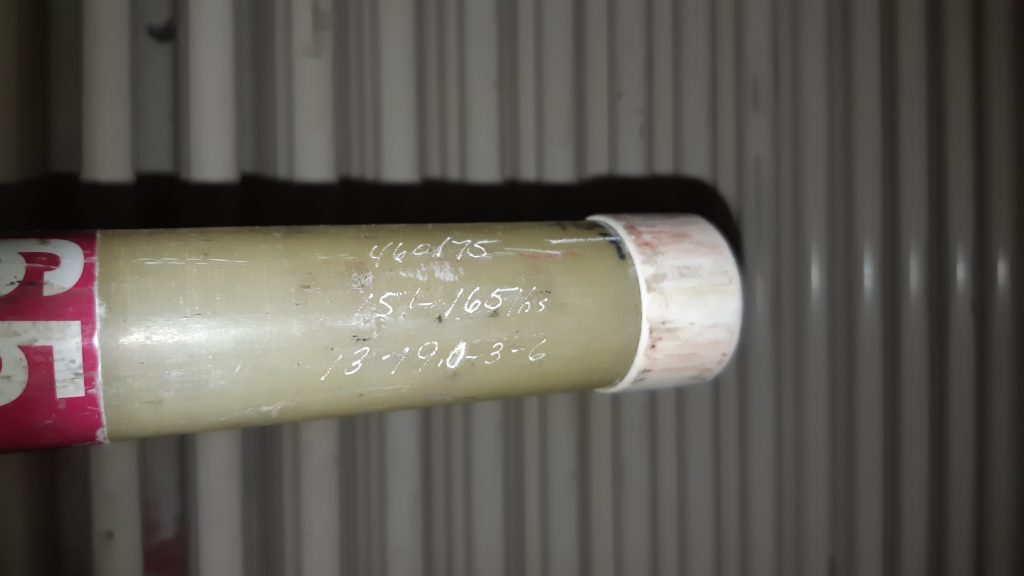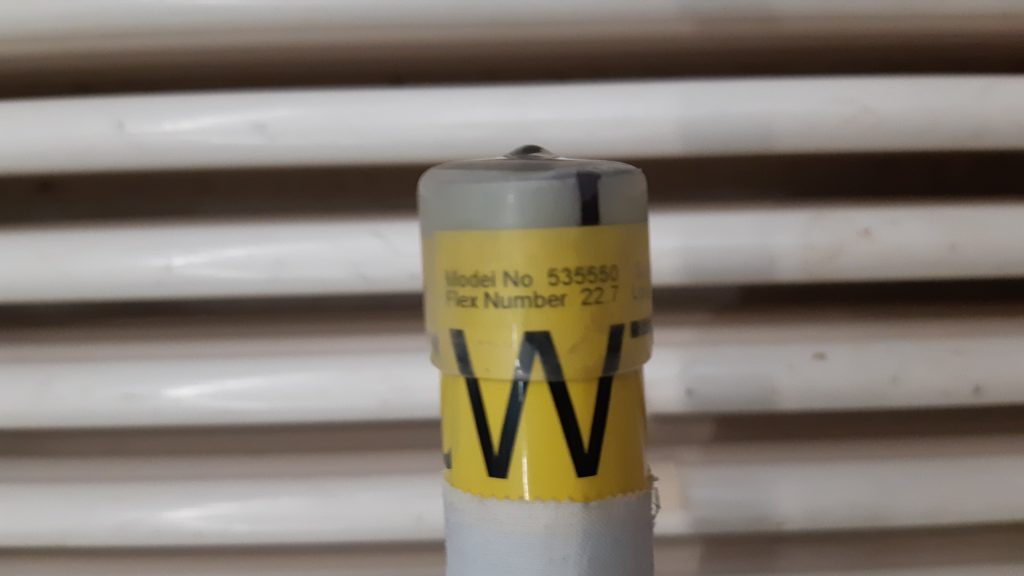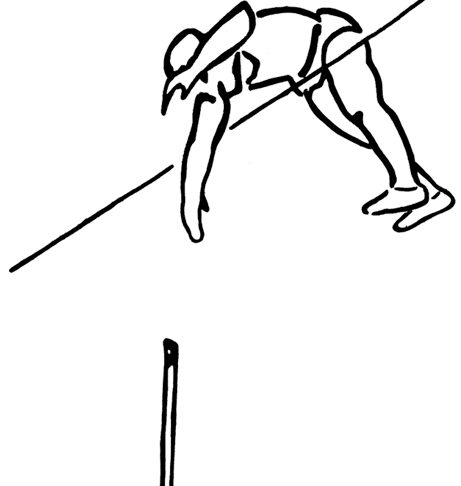This article about the main instrument in pole vaulting – the pole – contains three parts. This article wants to teach the basics about the implement the “vaulting pole.”
On the top of each pole there are two numbers; one tells the length of the pole the other one is a weight index. We first have a lock at the length.

UCS Spirit Pole; length 4.60 / 15 ft. 1 inch

Pacer One Pole; Length 3.55m
Poles are usually produced in the length 3.70m, 4.00m, 4.30m, 4.60m, 4,90m. The first producers of vaulting poles had their base in the U.S., that is why the length increases in steps of a foot (30.48cm): 12 feet, 13 feet, 14 feet and so on. Calculated exactly, feet do not equal European measurement (for example 15 ft. is not exactly 4.60m) and poles are not exactly as long as you are told. Sometimes it is a centimetre more sometimes one less. Producing poles isn’t rocket science. If car engineers would fabricate vaulting poles, there would be tolerances like you know from golf-sticks and they would cost a fortune.
During the past 15 years there came up poles in new, intermediate length. First for pro’s only, then for everybody. The rise of women’s pole vault showed the need for smaller steps between poles. New poles in length of 4.15m, 4.45 and 4.75 where available. Today 15cm-increasement (1/2 feet respectively) is usual: 11’6”, 12’, 12’6”, 13’, 13”6 and so on. On every pole there is written the length in American and European units.

UCS/Spirit pole; length 4.30m / 14 ft.
What do you have to look for regarding the length of a pole?
I could write a book about that. In short: Jumping with a bending of the pole, one should – at least in competition – choose the length of the pole regarding that his top hand is not lower than 30cm from the top end (the length of the pole follows the grip height not inversely!). The reason for this conclusion will be content of another article.

